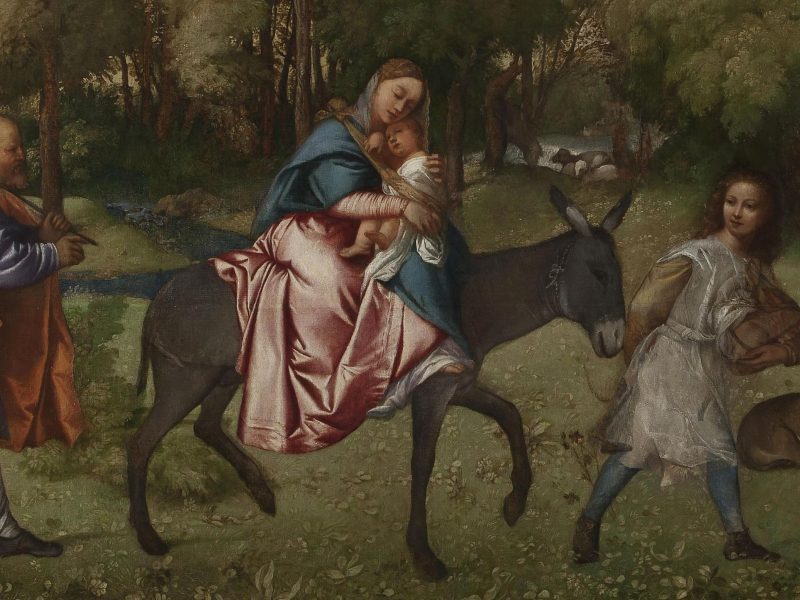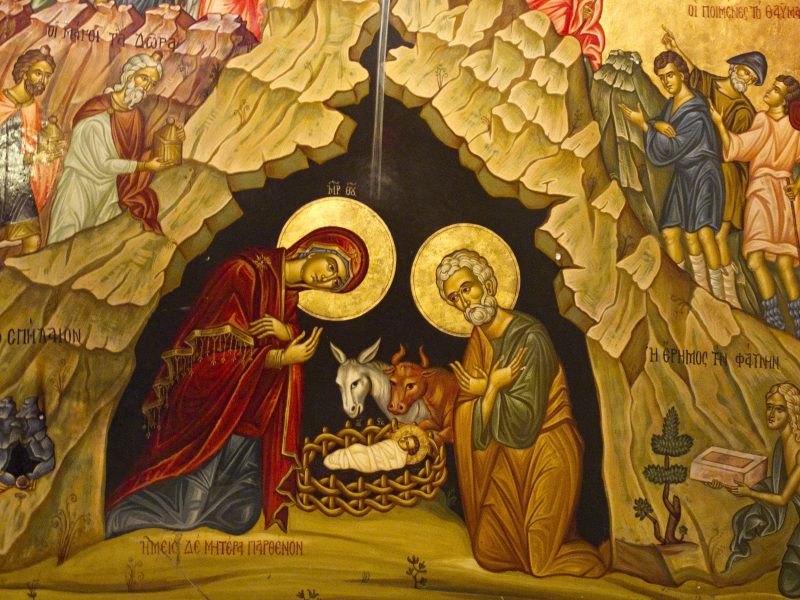
Beyond the Greyscale Filter
Good Friday. Fr Matthew Jarvis finds that the Cross of Christ bring colour to the world.
Thou hast conquered, O pale Galilean; the world has grown grey from thy breath;
We have drunken of things Lethean, and fed on the fullness of death.
These lines from Swinburne’s Hymn to Prosperpine mourn the passing of pagan religions under the rising tide of Christianity, inspired by the supposed last words of the pagan emperor Julian ‘the Apostate’: Vicisti, Galilæe.
‘You have conquered, O Galilean’ – but Swinburne considers this is a dark and dreary result for the world. He even accuses the Virgin Mary of being as pale and lifeless as her Son, unlike bright Venus coming forth from the sea-foam (perhaps as captured by Botticelli):
For thine [thy mother] came pale and a maiden, and sister to sorrow; but ours,
Her deep hair heavily laden with odour and colour of flowers.
Ironically, Swinburne’s poem is in praise of Proserpine, the Queen of the Underworld, mistress of death, and the poet seeks solace in the sleep of death, rather than passing loves or sorrows. If anything is dreary and dull, it is his own outlook: ‘the world is not sweet in the end’.
Today, when Christ died, there was indeed a greyness cast over the earth. ‘Now from the sixth hour there was darkness over all the land until the ninth hour’ (Mt 27:45). When day fails and the shadows lengthen, we see only an indistinct grey. In Islam, night ends and the daytime fast begins when you can distinguish a white thread from a black thread [Quran 2:187].
In his spiritual classic, What Jesus Saw From the Cross, Antonin-Gilbert Sertillanges OP, who lived in Jerusalem in the 1920s, points out that the Cross of Christ would have cast its lengthening shadow right across the Temple. Quite literally, the Lamb of God on the cross was overshadowing the old Temple sacrifices of the Paschal lambs. But the Cross casts its shadow much further than that. It looms over the whole world, projecting the spectre of our sinfulness, the monstrosity of our madness, in killing the Son of Man, the Son of God.
This long shadow reaches us today. We are not exempt from contemplating the darkness of sin and death. We are appalled to see Christ on the Cross, as Isaiah prophesied: ‘his appearance was so marred, beyond human semblance […] he had no form or comeliness that we should look at him, and no beauty that we should desire him.’ We despised and rejected this ‘man of sorrows’ and hid our faces from him.
This Lent, I have been attentive to the grey shadows in a strange and unexpected way. A brother showed me his phone on Ash Wednesday, and behold, he had turned the screen grey for Lent! So that has been a Lenten discipline for me this year, having the greyscale filter on my phone. It has probably reduced my use of the screen, and that’s a good thing, though it has also removed me partially from the beauty of the world to which the screen gives access, such as photos received from family or friends. Naturally, I am looking forward to Easter Sunday when my phone will shine out in the full gorgeous spectrum of colour!
Instinctively, I feel Swinburne has got it completely the wrong way round. My greyscale phone is what life seems to me to be like without Christ, like the darkened land under the shadow of the Cross. And it’s his Resurrection alone that restores colour and life to the world.
In a strange way, this means that the Cross itself – seen from the other side of the Resurrection – glows with a beauty and radiance invisible to those who cannot see it as Christ’s supreme act of love for humanity. He loved us ‘to the end’ (Jn 13:1) when he finally gave up his spirit: ‘it is finished’ (Jn 19:30). Fulget crucis mysterium – the mystery of the Cross shines out – we sing in the Vexilla Regis hymn for Passiontide. Christ is our Light in the darkness, Life in the midst of death, and even the Cross glistens with all the love of God for humanity, with his bright blood poured out for our sake.
So Swinburne was only half right. Christ has conquered, but this means an end to darkness. The greyness of death has never looked so temporary, as my phone screen itself will proclaim three days from now.
Readings: Isaiah 52:13-53:12 | Hebrews 4:14-16,5:7-9 | John 18:1-19:42
Image: Mosaic from the ceiling of the Blessed Sacrament chapel in the Basilica of the National Shrine of the Immaculate Conception, Washington DC, photographed by Fr Lawrence Lew OP


